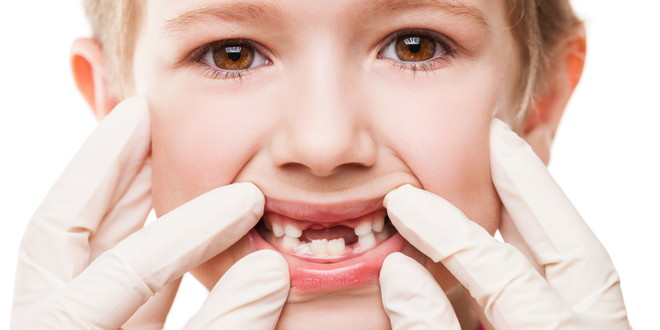When a baby is born they usually begin teething and parents see their first tooth anywhere from six months of age to around a year old. The rest of the 20 deciduous or primary teeth continue to show up until the child is from 2 to 3 years of age.
At around the age of 6, the child will begin to lose the primary teeth to make way for the permanent adult teeth. This entire transition will go on until the child is around 12 or 13 years old. Even though the time frame may be different for each child, it usually begins with the 6 year molars.
What You Should Know About 6 Year Molars

The child will usually gets his first adult molar when he or she is 6, which is why they call them the 6 year old molars. This adult molar will grow in right behind the baby molar. The 6 year molars establish the alignment of the rest of the adult teeth as they come in.
While the parents start noticing that the child's baby teeth are beginning to loosen and come out, it is usually the two bottom or top teeth, the central incisors, that begin to come out first. With the extraction of these baby teeth, parents might not even realize that the 6 year molars have arrived. Many children experience the same reactions they had when they were teething as a baby – fever, swollen gums, and unexplained crankiness.
It is more common for girls to begin getting in their adult teeth before boys of the same age. Once the baby teeth start coming out the adult teeth will begin moving into place. The baby teeth usually come out just as they came in.
With all the attention on the baby teeth coming out and the adult teeth coming in, parents should remind the child to pay special attention to the hygiene of new 6 year molars to avoid getting a cavity in their first adult tooth.
Other Facts You Need to Know About Children's Teeth
1. Why are there two rows of teeth in my child’s mouth?
In about 30% of children, the adult teeth begin coming in right behind the baby teeth creating two rows of teeth. If this happens with your child, you should check in with your dentist so he can do an x-ray to see how much of the root from the baby tooth is still there. The baby tooth may have to be removed but they usually come out on their own.
2. Is it normal for my child to have such a big space in between his new teeth in the front?
This is nothing to be alarmed about and is actually a normal part of the development of the jaw. The teeth need enough room to come in properly and the space begins to close as more and more teeth arrive. By the time the teenager gets in their eye teeth, there are usually no more large spaces. If your child continues to have large spaces, you may need to consult your dentist to check for other reasons.
3. Is it common for children to have missing teeth?
The number of teeth that each person has varies. Around 1 out of every 20 people has a different number of teeth, whether it is extra teeth or some teeth that appear to be missing. It is more of a regular occurrence for a child to miss some of his adult teeth than it was to miss the baby teeth. This is mostly attributed to genetics and the number of teeth that most of the members of the family have.
4. At what age should I try to teach my child to floss?
While flossing can be difficult to maneuver for some adults, for children from 7 to 8 years of age it can be impossible. Try to begin to teaching them the proper way to floss when they are 8 to 10 years old. You should start with the front teeth and once they master that, work with them on the back teeth.
If you start trying to teach them when they are not ready, they will just be frustrated and it might take you longer to get them interested again. You might want to consult with your dentist so you can show them the correct way to floss. If it is not done correctly, it won’t help the health of your child’s gums and teeth.
5. Does having bad baby teeth mean that their adult teeth will also be bad?
Bad teeth are not hereditary but the hygiene required to keep them healthy is. Bad teeth are the result of sugary foods and germs that have been sitting on the teeth and gums and have not been brushed from the teeth and gums. There are many adults who had bad teeth as children who cut down on their sugar intake, brushed and flossed regularly, and had a set of healthy adult teeth.
